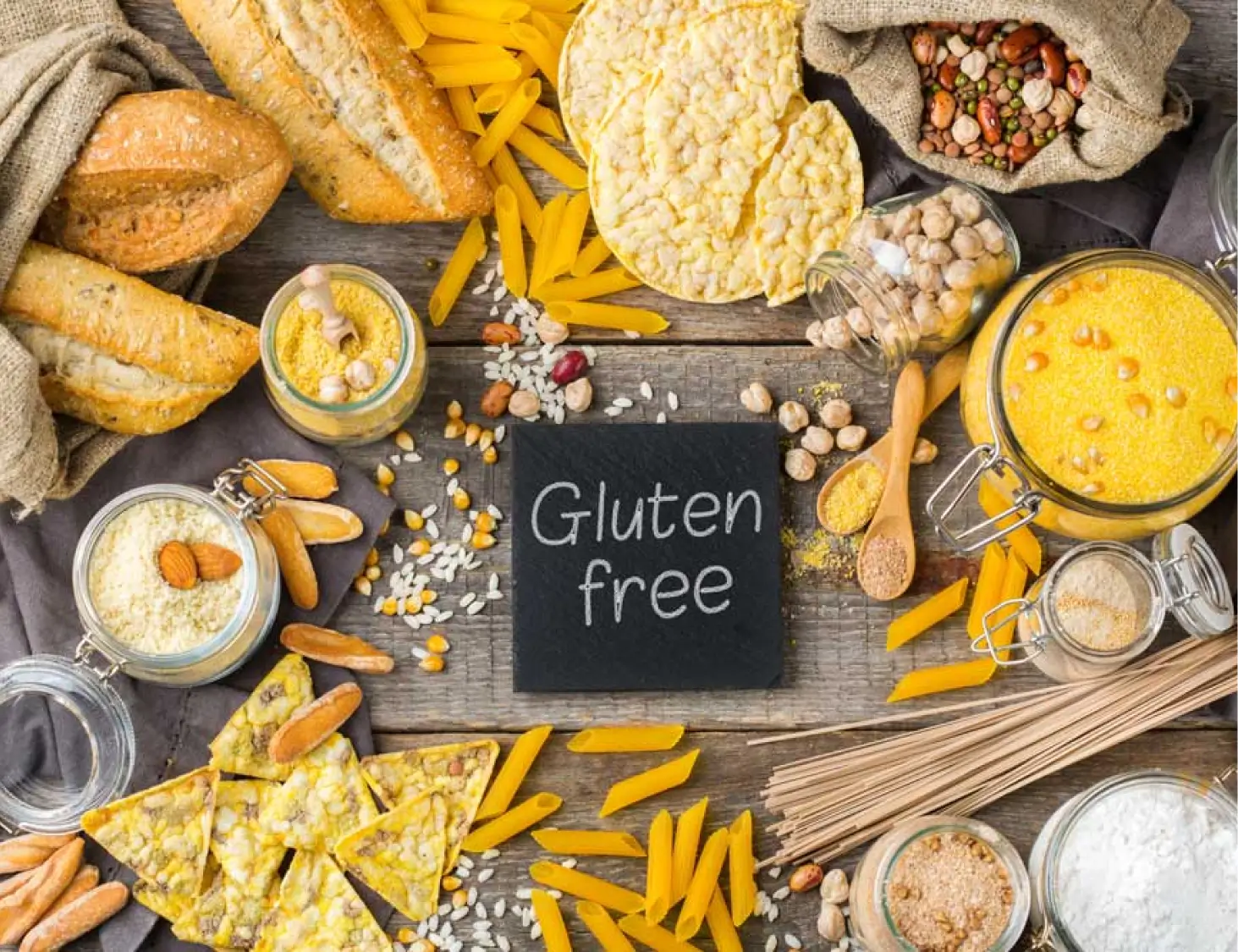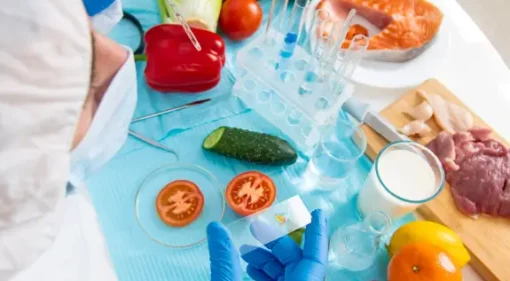Today, the difference between gluten-free vs gluten-friendly is essential. While both terms sound similar, they’re not interchangeable.
Gluten-free products are strictly made without any gluten-containing ingredients and meet regulatory standards for people with celiac disease or severe gluten intolerance. On the other hand, gluten-friendly options are designed to reduce gluten exposure but may still contain traces, making them less suitable for those with medical gluten sensitivities.
What is Gluten?
Gluten is a naturally occurring protein found in grains such as wheat, barley, and rye. Often referred to as the “glue” of baked goods, gluten plays a crucial role in giving dough its stretchiness and structure.
When flour is mixed with water, gluten forms a network of proteins that trap air bubbles, allowing bread to rise and develop its soft, chewy texture. This unique quality is what makes gluten essential in everything from fluffy loaves of bread to crisp pizza crusts.
What Does “Gluten Friendly” Really Mean?
The term “gluten friendly” is often seen on menus and food packaging, but it can be confusing for those with gluten sensitivities. Simply put, “gluten friendly” means that a food item is made with gluten-free ingredients, but it may still come into contact with gluten during preparation.
This potential cross-contamination can occur in shared kitchens, ovens, or utensils. While gluten-friendly options may be suitable for individuals with mild sensitivities, they are typically not recommended for people with celiac disease or severe gluten intolerance. When in doubt, it’s always best to ask how the food is prepared or opt for certified gluten-free products.
What does Gluten-free mean?
A gluten-free diet involves avoiding all foods that contain gluten—a protein naturally found in wheat, barley, rye, and their derivatives. For individuals with celiac disease, gluten intolerance, or non-celiac gluten sensitivity, eliminating gluten is essential to maintaining health and preventing symptoms.
This diet focuses on whole, naturally gluten-free foods such as fruits, vegetables, meat, poultry, fish, eggs, legumes, nuts, and seeds. It also includes specially made gluten-free alternatives like bread, pasta, and baked goods, which are produced without gluten-containing grains.
The Difference Between “Gluten-Free” and “Gluten-Friendly”
| Aspect | Gluten-Free | Gluten-Friendly |
| Definition | Food tested and proven to contain less than 20 ppm of gluten | Food made without gluten ingredients but not tested for trace amounts |
| Safety Level | Safe for people with celiac disease and severe gluten intolerance | Not always safe for people with celiac disease or strong sensitivities |
| Cross-Contamination | Strictly controlled to avoid any gluten exposure | Possible due to shared cooking surfaces or preparation methods |
| Testing Requirement | Must comply with FDA standards and undergo testing | Typically not tested for gluten content |
| Best For | People with celiac disease, gluten intolerance, or strict gluten-free diets | People with mild gluten sensitivity or those avoiding gluten by choice |
| Examples | Certified gluten-free bread, pasta, snacks | Restaurant dishes labeled “gluten-friendly” but cooked in shared kitchens |
Gluten Contamination in Naturally Gluten-Free Foods
Despite being naturally free of gluten, products derived from ingredients such as corn, rice, and millet often pose a hidden risk to individuals with celiac disease (CD). This risk arises from gluten contamination during various stages of food production. From agricultural fields and milling facilities to manufacturing plants, restaurants, and even home kitchens, the potential for gluten exposure is widespread and difficult to fully control. When such contaminated products are inaccurately labeled as “gluten-free,” they can trigger a recurrence of symptoms in individuals with CD, undermining their dietary management and health.
Until the 1970s, there were no reliable or sensitive tools for detecting gluten contamination in food, leaving patients with CD vulnerable to consuming unsafe levels of gluten. The landscape changed significantly with the development of immunochemical techniques, particularly the Enzyme-Linked ImmunoSorbent Assay (ELISA), which enabled accurate quantification of gluten levels in food products.
Gluten-Free, But Not Risk-Free: The Ongoing Challenge of Dining Out with Celiac Disease
For individuals with celiac disease (CD), maintaining a strict gluten-free diet is essential to avoid triggering symptoms and long-term health complications. A systematic review encompassing 24 international studies investigated gluten contamination in foods labeled as gluten-free, specifically focusing on contamination levels exceeding the 20 mg/kg threshold set by Codex Alimentarius.
The findings are concerning: a statistical meta-analysis revealed an average contamination prevalence of 42% (ranging from 17% to 66%) in certified gluten-free products served by food service providers. Industrially produced gluten-free products fared better but still showed a 13% mean contamination rate (range: 11–16%), indicating that even packaged foods are not immune to risk.
Further insights come from real-world testing conducted in restaurants across the United States. Over an 18-month period, 804 users utilized a portable gluten detection device (Nima, Nima Labs, Inc., San Francisco, CA, USA) to perform 5,624 tests on gluten-free-labeled foods. The results were striking: 32% of the tested products contained gluten levels above 20 mg/kg. Notably, the likelihood of contamination varied by meal time—27.2% of breakfast items and 34.0% of dinner items tested positive. Among specific foods, gluten-free pizza and pasta were particularly problematic, testing positive in 53.2% and 50.8% of samples, respectively.
Get in Touch With CGA
Carat Global Assurance (CGA) specializes in helping manufacturers and brands earn trusted certifications, including gluten-free certification. CGA’s rigorous auditing process ensures your products meet the highest global standards, giving your consumers confidence and your business a competitive edge.Contact CGA to learn more by reaching out to us at info@caratga.com or +1 813 906 8113.




